Best web development tools will be discussed in this post. For a firm to develop, having a website has become necessary. It is the quickest method of luring possible customers & persuading them to use your goods or services.
However, developing websites and web apps can occasionally be a major pain.
We have compiled some of the top web development tools of 2022 because we know it can be challenging. You will receive every possible help from these tools to expedite and simplify your web development.
As a bespoke web development business, we frequently employ several of these tools in our work. One of these tools will assist you, whether it’s picking the appropriate colours for your website, managing data requests, or offering a space to share and work with other developers.
Let’s first examine what web app development tools are and why they are necessary before moving on.
Useful Reasons for Web Development Tools
There are numerous stages and iterations involved in the continual lifecycle of web development. It takes a lot of work, from picking a programming language and framework to selecting a reliable webserver to host your application.
Web development tools are made to make web developers’ development lifecycles simpler and more efficient without sacrificing performance.
Top 15 Best Web Development Tools To Build A Web Application In 2022
Top 15 Best Web Development Tools To Build A Web Application are explained here.
The web heavily depends on frontend development. It is not surprising that frontend web development has multiplied over the past few years given the rapid growth of web technologies.
Focus is placed on client-side development, or what users see, in frontend development.
Technical proficiency in web languages like HTML, CSS, and JavaScript, as well as knowledge of design ideas, colour palettes, and code debugging and testing, are needed for front-end web development.
Are frontend tools necessary?
A user-friendly, appealing UI-UX is created by frontend web developers for web sites and web applications. They choose the website’s aesthetic and feel.
Since many of these processes may be automated and made simpler by frontend frameworks and tools, they will be of great assistance.
By offering drag-and-drop pieces and different built-in features to build a more attractive design layout, frontend tools speed up the development of a web app.
UI libraries, UI-UX designer tools, CSS frameworks, JavaScript libraries, integrated development environments, and HTML drag-and-drop tools are examples of frontend tools.
To assist you with your upcoming development project, here is a list of the top 10 frontend development tools.
1. Novi Builder
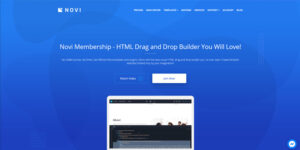
The HTML drag-and-drop builder Novi Builder provides free customisable UI templates and plugins. It gives developers pass to the elements’ source codes and enables them to make numerous graphical UI design modifications to the website at any moment.
For several popular browsers, including Google Chrome and Opera, Novi Builder is a built-in tool. However, it can function as a browser add-on. For those who are brand-new to the world of web development, it can be a little challenging to understand.
For seasoned developers with in-depth knowledge, insight, and experience creating websites and applications, we’d suggest it.
2. Creative Tim
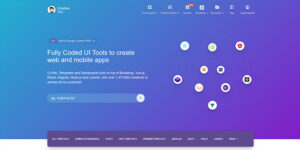
UI components and dashboards are provided by Creative Tim, a BootStrap-based front-end web portal development tool, which uses the JavaScript technologies Vue, Angular, and React.
It facilitates the development of mobile and web applications. Using Creative Tim, you can make tasteful, responsive websites.
It functions as a one-stop shop for all front-end developer needs. A frontend developer is given a broad arsenal of UI elements, user-friendly templates and dashboards, and pre-coded parts by Creative Tim.
3. Visual Studio Code
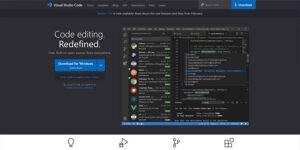
Microsoft developed the free, open-source Visual Studio Code code editor for Windows, macOS, and Linux.
Code completion, code refactoring, syntax highlighting, embedded Git, and testing support are just a few of the many features that this intelligent code editor offers.
Because the Visual Studio code editor is adaptable, you may use breakpoints, call stacks, and an interactive console to debug the code.
Additionally, VS Code delivers a large range of packages & free extensions for any additional functionality or features you may need.
You can use it for various backend functions as well because it supports both Python and JavaScript.
4. BootStrap
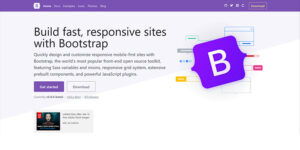
A popular open source library of HTML, CSS, and JavaScript tools is called Bootstrap. You can use it to make web-based, responsive mobile applications.
Bootstrap is a comprehensive UI framework that provides access to numerous pre-built components and usable elements.
Bootstrap is easy to set up, and a professional developer may quickly produce a useful layout with a responsive design. Given that it is completely adaptable, the proper developer can work wonders with it.
Its support for additional website development tools like Sass and JQuery, which expands the variety of features it offers, is another game-changing feature.
Looking for a Website that is Mobile-Friendly?
You can work with our frontend developers to create a unique website that functions flawlessly on all platforms, including PCs, tablets, and mobile devices.
Receive A Free Estimate from a Professional
5. Sass

A preprocessing scripting vocabulary is called Sass. It can assist you increase the functionality of an existing CSS site and compiles into CSS codes. Variables, multiple inheritances, and nesting are all very simple to introduce for web developers.
Sass is ideal for trading with CSS because of its sophisticated capabilities like control directives for libraries, automatically formatted outputs, and external libraries.
Additionally, it makes a fantastic tool for front-end designing. It delivers access to numerous useful capabilities for changing the font, colours, and other UI elements.
Sass also causes it simple to share designs between & within projects, which results in a smooth project management process.
6. Envato

Envato is a front-end product tool that works with JavaScript, CSS, and HTML. It offers templates for the JavaScript library Vuejs, Laravel, Angular, and BootStrap in support of several web application frameworks.
It includes a library of more than 1000 ready-made HTML5 components and templates that designers can use right away to create user interfaces.
Additionally, Envato provides CSS and JavaScript coding optimizations that help reduce your coding time and raise your website speed rankings.
7. InVision Cloud

A digital product design platform for producing engaging user experiences is called InVision Cloud. The InVision cloud is easy to use and offers stylish, contemporary symbols.
It includes distinctive web design tools including the Element Library, a picture board, navigation flows, a web prototype for desktop sites, as well as many more conventional design principles and techniques.
Their Prototype tool is useful for designing animations and clickable elements for desktop and mobile apps.
If you need many prototypes for a project as well as other features, you may choose choose a professional plan.
8. Sublime Text
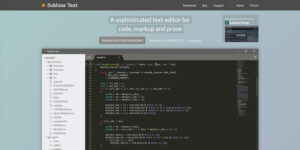
A cross-platform, open-source editor for code, writing, and markup is called Sublime Text. It supports a combination of programming & markup languages, and you can adjust practically everything to the specifications of your project.
Its user interface is nicely made, quick, and effective. Due to its amazing collection of features and sophisticated editing tool, Sublime Text is used by the majority of web designers.
It offers excellent features including simultaneous editing, rapid file, symbol, line, and variable navigation, and numerous keyboard shortcuts for fluid and adaptable programme design.
9. NPM

The Node Package Manager for JavaScript is known as NPM. It aids NodeJS developers in finding packages of reusable parts and putting them together in innovative and potent ways.
For communicating with a repository that supports the package, it can be used as a command-line tool.
NPM assists in putting the system together in the most effective and advantageous manner feasible. The management of the team’s public and private code can be done using a similar procedure by the project manager.
It is really simple to use and works well for medium-sized to large-sized teams as a project management tool.
10. One
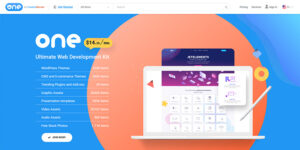
One of them is a web development kit with a selection of simple-to-use themes. This tool is available for an infinite number of projects and domains.
It offers a huge selection of plugins, add-ons, and stock images. With the help of the provided audio and video assets, you may create a polished web application.
One makes available the “Draftium tool,” which aids in putting your website or application idea into graphic form. It is the ideal solution for creating web apps with a business focus.
A Top 10 List of Backend Web Development Tools
Web apps that are stunning and simple to use astonish people. No matter how attractive the website looked, you would not draw any users if it was slow or did not serve its intended goal.
If you want a website that works smoothly, the backend development needs to be flawless.
Are backend tools required?
You need the ideal hosting services, the ideal backend frameworks, the ideal coding environment, and an efficient data management system to make a website run smoothly.
Backend tools support database management, query creation, and smooth data retrieval in response to user requests. Various backend tools handle HTTP requests, version control, and session management.
The list of top back end development tools a web app developer must have is featured in the next section.
1. GitHub

The multiple useful tool available to software professionals today is GitHub. It can be viewed as a sizable storage of coding expertise or as a special online workspace for open source cooperation. Also check Client Portal software
Most importantly, GitHub is a community where developers can share and work together. However, at first, it was only performance control software.
You can share & save code on GitHub, participate in open-source projects, & track revisions. This is another web development tools.
You can use it to performance control your own project or to contribute to other people’s projects in order to raise your profile as a developer.
2. WordPress
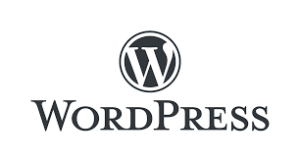
This is another web development tools. WordPress is a PHP-based web blogging software. Millions of users, both free and paid, utilise it on a daily basis.
It is a top-notch hosting platform for your websites. Additionally, it offers the choice of hosting it on your server using PHP and MySQL.
WordPress may be utilised as a CMS to build up a development website because it is one of the most significant platforms for developing websites.
The WYSIWYG text editor, collaborative writing with numerous writers, permalinks that are search engine friendly, static pages, Trackback/Pingback, and member registration/login are some of its features.
3. MongoDB
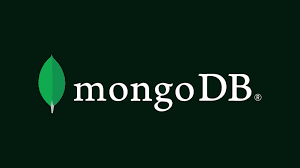
A NoSQL database called MongoDB has the capacity to store and retrieve huge amounts of unstructured data. To do this, data is sorted into documents rather than tables.
This enables you to form relationships, define relationships between structures, build hierarchies, and store arrays. This is another web development tools.
In order to personalise an experience for each user, MongoDB can leverage information such as demographics, site browsing history, and user behaviour.
In real life, this translates to the ability to tailor user experiences to each user’s likes and interests, making it essential web development software. Also check SpyApp247 alternatives
4. Apache
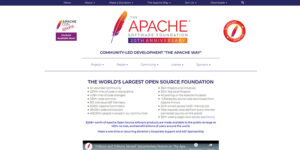
The connection between your client-side and server-side, as well as the delivery of files between them, are established by the free, open-source web server software Apache.
Additionally customizable, Apache includes modules that administrators can enable and disable as necessary.
This is another web development tools. Because of its speed and optimal performance, NGINX is recommended if you’re developing a site that will need to handle and manage a huge traffic load instead than Apache, which is not ideal for high-traffic sites.
However, the majority of developers prefer Apache because of its user-friendliness and customization options.
5. Grunt
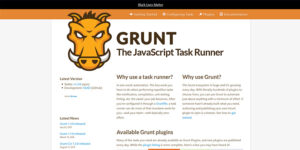
On top of NodeJS, the task manager Grunt is developed in JavaScript. Most of the repetitive tasks involved in web development are automated. Also check EZ Websites Monitoring alternatives
Minification, compilation, unit testing, and linting are all very simple to do once the job has been installed and configured using a Grunt file. This is another web development tools.
Grunt offers developers a fantastic writing environment with a constantly expanding pool of plugins. NPM or any other NodeJS/Javascript package manager can be used to download it.
To complete the pre-configured tasks, Grunt also supports other frontend web tools like Sass or RequireJS.
Question and Answer Sheets
Is web development a job in decline?
The demand for web development applications is expanding really quickly. Therefore, to respond to the question “Is web development a disappearing career?,” no. Because the field has grown so large, it is now being divided into numerous job profiles. Therefore, merely becoming a web developer won’t do. All you ought to do is focus on one area of the development process for a great career.
What technologies are need to study web development?
For web development, understanding HTML and CSS is essential. You also need to become proficient in a web scripting language, such as Python, JavaScript, or PHP. You can now move forward after choosing a web framework that supports the programming language.
What are the ideal tools for HTML coding?
When coding HTML, one of two types of editors is used: a text editor or a WYSIWYG (what you catch is what you call) editor. If you are a newbie, we advise you to use a WYSIWYG editor like Dreamweaver, Wix, or Kite because they don’t require a lot of prior experience. For a more personalised web browsing experience, you can utilise HTML syntax editors like Sublime-Text, Atom, or Notepad++.
Conclusion
A community of committed developers, coders, and designers has emerged around web development. To meet any demand, numerous frameworks and tools for web development are being created.
The greatest of the best web development tools are those that were previously discussed. All developers, seasoned or inexperienced, should consider using it.
Check escape our blog on the Top 8 AngularJS web tools if working with Angular is your preferred method.
If we missed your favourite web tool, please leave a remark below. Please feel free to message us on Twitter or on Facebook at @MonocubedCanada.

